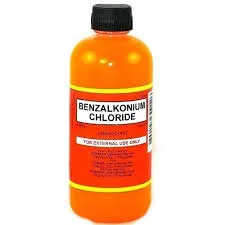cationic polyacrylamide
Cationic Polyacrylamide A Versatile Polymer for Various Applications
Cationic polyacrylamide (CPAM) is a synthetic polymer that has gained significant traction in various industrial applications due to its unique properties. As a cationic polymer, it carries a positive charge, which enables it to interact effectively with negatively charged particles. This characteristic makes CPAM particularly valuable in areas like wastewater treatment, paper manufacturing, and enhanced oil recovery, among others.
One of the primary applications of cationic polyacrylamide is in the field of wastewater treatment. Industrial and municipal wastewater often contains suspended solids, organic matter, and other pollutants that need to be removed before discharge. CPAM serves as a flocculant in these processes. When added to wastewater, CPAM molecules connect with negatively charged particles, forming larger aggregates that can be easily removed through sedimentation or filtration. This process not only enhances the clarity of the water but also significantly reduces the chemical oxygen demand (COD) levels, which are critical indicators of pollution.
In paper manufacturing, cationic polyacrylamide is utilized as a retention aid and a drainage aid. By improving the retention of fine particles and fibers, CPAM helps enhance the quality of the paper while decreasing the amounts of raw materials needed. This contributes to cost savings and increased efficiency in the production process. The use of CPAM also minimizes the loss of valuable materials during production, leading to a more sustainable approach in the paper industry.
Enhanced oil recovery (EOR) is another critical area where cationic polyacrylamide is employed. In the process of extracting oil from reservoirs, water flooding techniques are commonly used to displace oil and improve recovery rates. CPAM enhances the viscosity of the injected water, which improves the sweep efficiency during the flooding process. The increased viscosity helps to push the oil towards production wells more effectively, resulting in higher oil yield. This application not only improves the economic viability of oil extraction operations but also helps in reducing the environmental impact associated with traditional recovery methods.
cationic polyacrylamide

Cationic polyacrylamide also finds applications in agriculture, particularly in soil stabilization and erosion control. When used as a soil conditioner, CPAM helps to improve water retention in arid regions, thereby supporting plant growth. Its ability to bind soil particles prevents erosion, making it an invaluable tool in sustainable agriculture practices. Furthermore, CPAM can be used in the formulation of slow-release fertilizers, enhancing the efficiency of nutrient delivery to crops.
The versatility of cationic polyacrylamide is complemented by its relatively low toxicity, making it suitable for a wide range of applications without posing significant risks to human health or the environment. However, it is essential to handle CPAM with care, as improper disposal can lead to potential environmental concerns.
Advancements in polymer technology have led to the development of various cationic polyacrylamide formulations tailored for specific applications. Innovations such as copolymerization and modifications to the molecular weight of the polymer can enhance its effectiveness in particular environments. Research continues to explore new methods for optimizing CPAM’s performance, thereby expanding its applications across different industries.
In conclusion, cationic polyacrylamide is a versatile polymer with significant applications in wastewater treatment, paper manufacturing, enhanced oil recovery, and agriculture. Its unique cationic properties enable it to interact effectively with negatively charged particles, making it invaluable in processes that require flocculation, retention, and stabilization. As industries continue to seek sustainable solutions, the role of CPAM will likely expand, leading to more innovative uses and formulations tailored to meet specific needs. The future of cationic polyacrylamide appears promising, with ongoing research poised to unlock even greater potential for this remarkable polymer.
-
Water Treatment with Flocculant Water TreatmentNewsJun.12,2025
-
Polymaleic AnhydrideNewsJun.12,2025
-
Polyaspartic AcidNewsJun.12,2025
-
Enhance Industrial Processes with IsothiazolinonesNewsJun.12,2025
-
Enhance Industrial Processes with PBTCA SolutionsNewsJun.12,2025
-
Dodecyldimethylbenzylammonium Chloride SolutionsNewsJun.12,2025





